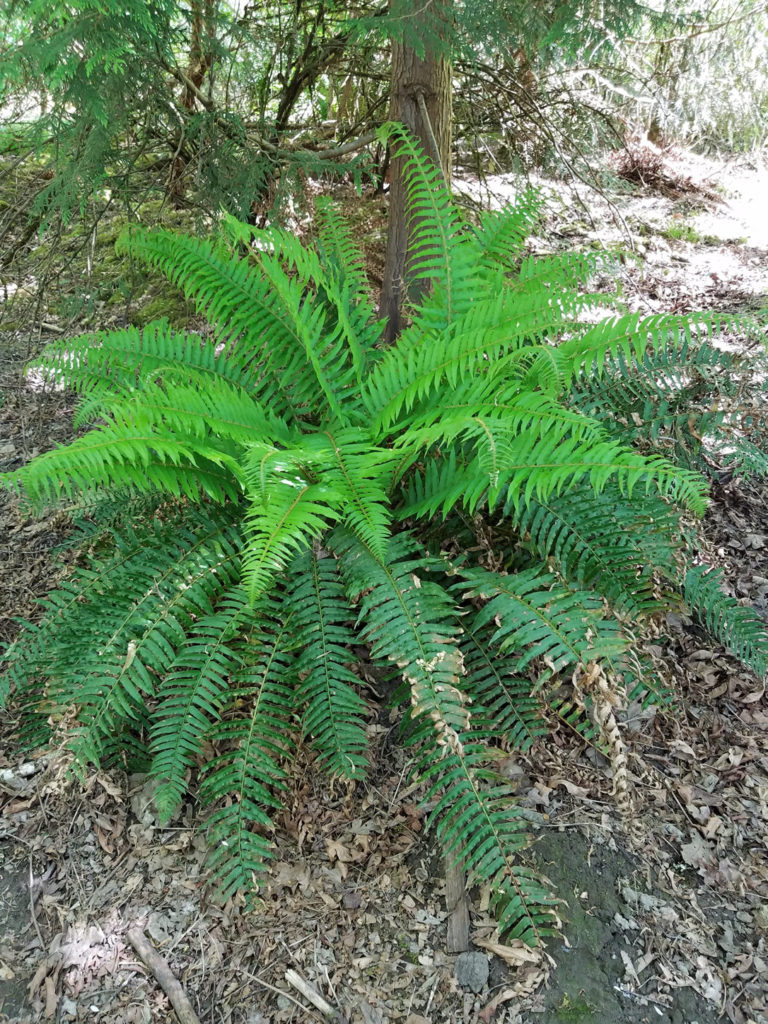
Sword Fern, Polystichum munitum
Polypodiaceae – Fern family
The many (“poly”) rows (“stichum”) of spore clusters give the genus its name. The specific name is derived from the sword-like (linear-lanceolate) leaves that are divided into rows of tooth-like leaflets (pinnae) suggesting an armament (“munitum”) of teeth.
In the forest, sword ferns form lush evergreen clumps of arching, two or four foot fronds. A luxuriant quality is imparted by the bright green of unfurling younger fronds contrasted against the deep green of mature fronds. Sword fern spores germinate readily on damp, mossy soil. Thus sword ferns root in forest soil in contrast to licorice ferns that frequently perch on moss-covered big leaf maple trunks, or wood ferns that usually root on well-rotted logs and stumps. Various Northwest Native groups peeled and baked or boiled the stems for food. They also used the leaves to line pits for baking or steaming of camas bulbs, wapato, and other vegetables. The fronds were used as a non-sticking surface for drying and when bundled, they served as mattresses. Despite their lush appearance, sword ferns are relatively tolerant of drought and can be mixed with salal in partially shaded areas to form a perfectly natural green (5-34).
Information courtesy of “The View From Springbrook Park; an Illustrated Natural History” by Ed Chinn.
Photos taken by Laura Tanz
Sponsored by Friends of Springbrook Park; Lake Oswego, OR